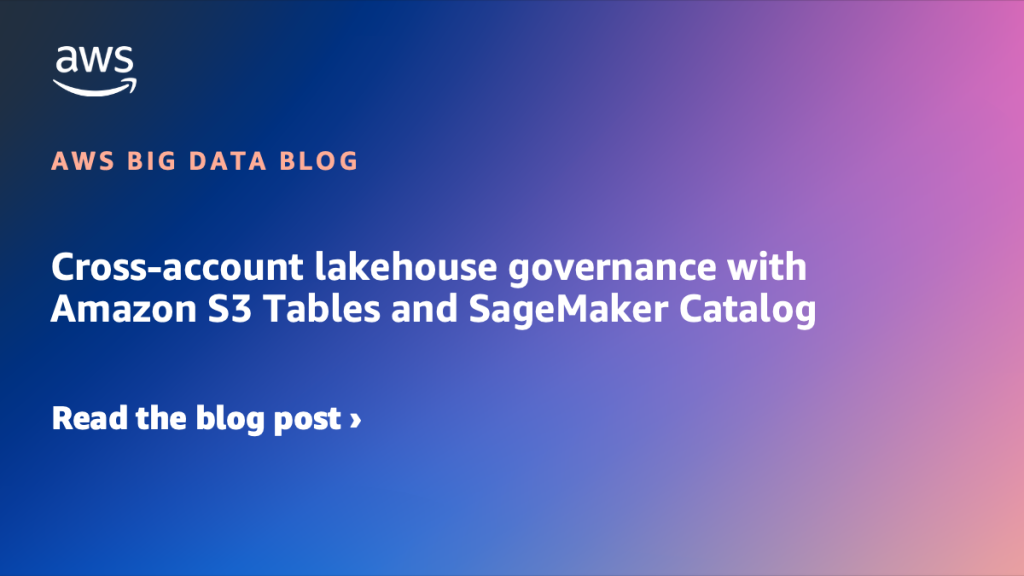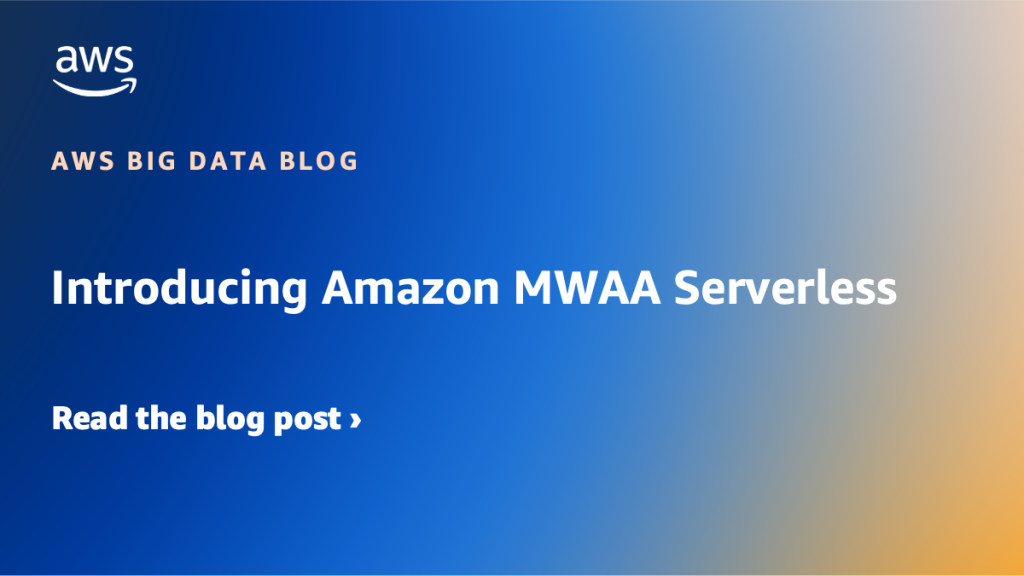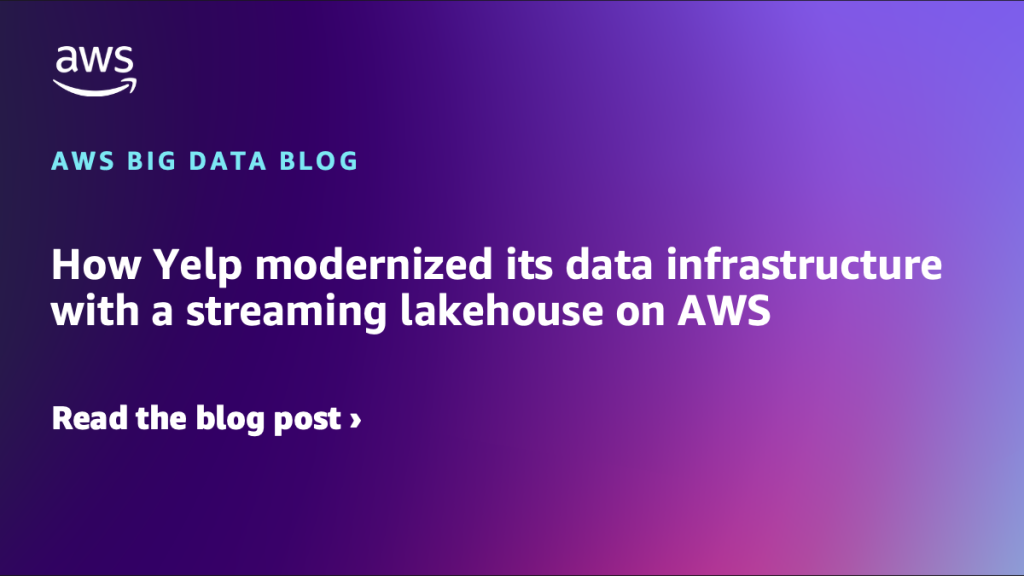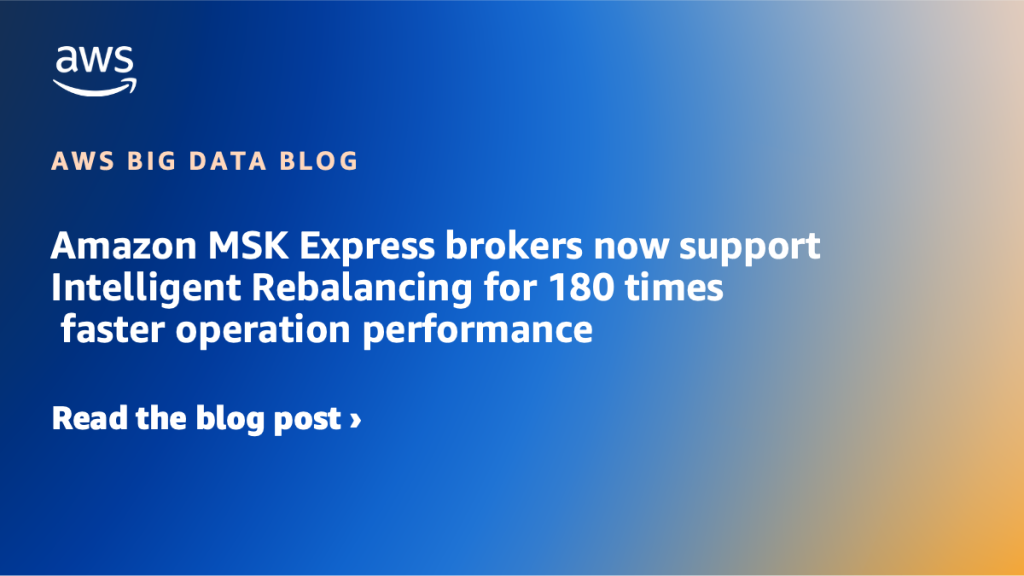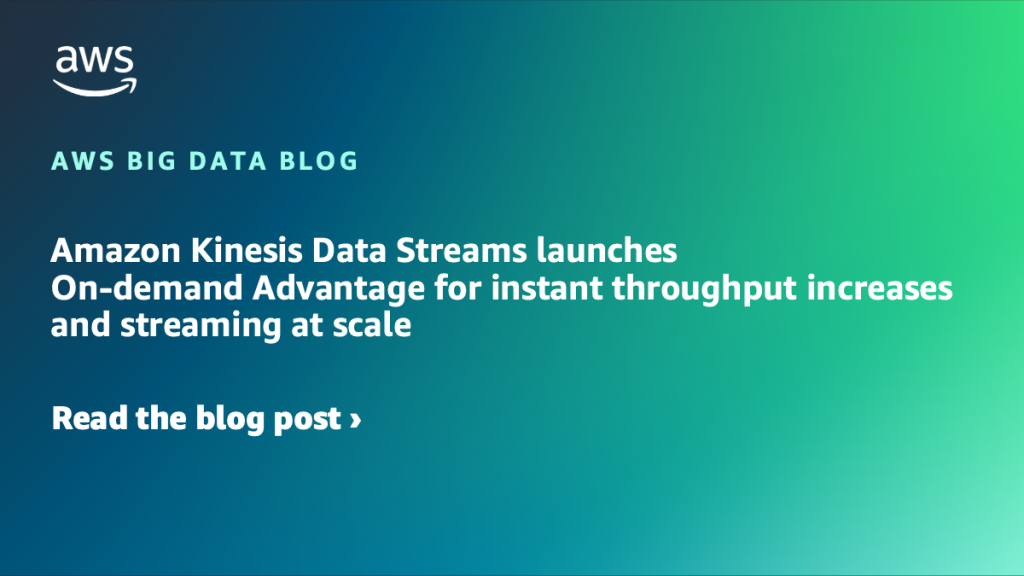AWS Big Data Blog
Category: Learning Levels
Getting started with Amazon S3 Tables in Amazon SageMaker Unified Studio
In this post, you learn how to integrate SageMaker Unified Studio with S3 Tables and query your data using Amazon Athena, Amazon Redshift, or Apache Spark in EMR and AWS Glue.
Cross-account lakehouse governance with Amazon S3 Tables and SageMaker Catalog
In this post, we walk you through a practical solution for secure, efficient cross-account data sharing and analysis. You’ll learn how to set up cross-account access to S3 Tables using federated catalogs in Amazon SageMaker, perform unified queries across accounts with Amazon Athena in Amazon SageMaker Unified Studio, and implement fine-grained access controls at the column level using AWS Lake Formation.
Introducing Amazon MWAA Serverless
Today, AWS announced Amazon Managed Workflows for Apache Airflow (MWAA) Serverless. This is a new deployment option for MWAA that eliminates the operational overhead of managing Apache Airflow environments while optimizing costs through serverless scaling. In this post, we demonstrate how to use MWAA Serverless to build and deploy scalable workflow automation solutions.
How Yelp modernized its data infrastructure with a streaming lakehouse on AWS
This is a guest post by Umesh Dangat, Senior Principal Engineer for Distributed Services and Systems at Yelp, and Toby Cole, Principle Engineer for Data Processing at Yelp, in partnership with AWS. Yelp processes massive amounts of user data daily—over 300 million business reviews, 100,000 photo uploads, and countless check-ins. Maintaining sub-minute data freshness with […]
Introducing the Amazon OpenSearch Lens for the AWS Well-Architected Framework
In this post, we show you how to use the Amazon OpenSearch Service Lens to evaluate your OpenSearch Service workloads against architectural best practices.
Amazon MSK Express brokers now support Intelligent Rebalancing for 180 times faster operation performance
Effective today, all new Amazon Managed Streaming for Apache Kafka (Amazon MSK) Provisioned clusters with Express brokers will support Intelligent Rebalancing at no additional cost. In this post we’ll introduce the Intelligent Rebalancing feature and show an example of how it works to improve operation performance.
Analyzing Amazon EC2 Spot instance interruptions by using event-driven architecture
In this post, you’ll learn how to build this comprehensive monitoring solution step-by-step. You’ll gain practical experience designing an event-driven pipeline, implementing data processing workflows, and creating insightful dashboards that help you track interruption trends, optimize ASG configurations, and improve the resilience of your Spot Instance workloads.
Enhanced search with match highlights and explanations in Amazon SageMaker
Amazon SageMaker now enhances search results in Amazon SageMaker Unified Studio with additional context that improves transparency and interpretability. The capability introduces inline highlighting for matched terms and an explanation panel that details where and how each match occurred across metadata fields such as name, description, glossary, and schema. In this post, we demonstrate how to use enhanced search in Amazon SageMaker.
Amazon Kinesis Data Streams launches On-demand Advantage for instant throughput increases and streaming at scale
Today, AWS announced the new Amazon Kinesis Data Streams On-demand Advantage mode, which includes warm throughput capability and an updated pricing structure. With this feature you can enable instant scaling for traffic surges while optimizing costs for consistent streaming workloads. In this post, we explore this new feature, including key use cases, configuration options, pricing considerations, and best practices for optimal performance.
Scaling data governance with Amazon DataZone: Covestro success story
In this post, we show you how Covestro transformed its data architecture by implementing Amazon DataZone and AWS Serverless Data Lake Framework, transitioning from a centralized data lake to a data mesh architecture. The implementation enabled streamlined data access, better data quality, and stronger governance at scale, achieving a 70% reduction in time-to-market for over 1,000 data pipelines.

